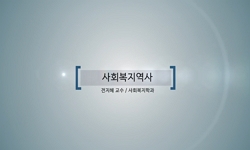Objectives: To date, studies have not comprehensively demonstrated the relationship between stroke incidence and socioeconomic status. This study investigated stroke incidence by household income level in conjunction with age, sex, and stroke subtype ...
http://chineseinput.net/에서 pinyin(병음)방식으로 중국어를 변환할 수 있습니다.
변환된 중국어를 복사하여 사용하시면 됩니다.
- 中文 을 입력하시려면 zhongwen을 입력하시고 space를누르시면됩니다.
- 北京 을 입력하시려면 beijing을 입력하시고 space를 누르시면 됩니다.


The Incidence of Stroke by Socioeconomic Status, Age, Sex, and Stroke Subtype: A Nationwide Study in Korea
한글로보기https://www.riss.kr/link?id=A101438238
- 저자
- 발행기관
- 학술지명
- 권호사항
-
발행연도
2014
-
작성언어
English
- 주제어
-
등재정보
SCOPUS,KCI등재
-
자료형태
학술저널
- 발행기관 URL
-
수록면
104-112(9쪽)
- 제공처
-
0
상세조회 -
0
다운로드
부가정보
다국어 초록 (Multilingual Abstract)
Objectives: To date, studies have not comprehensively demonstrated the relationship between stroke incidence and socioeconomic status. This study investigated stroke incidence by household income level in conjunction with age, sex, and stroke subtype in Korea. Methods: Contributions by the head of household were used as the basis for income levels. Household income levels for 21 766 036 people were classified into 6 groups. The stroke incidences were calculated by household income level, both overall within income categories and further by age group, sex, and stroke subtype. To present the inequalities among the six ranked groups in a single value, the slope index of inequality and relative index of inequality were calculated. Results: In 2005, 57 690 people were first-time stroke patients. The incidences of total stroke for males and females increased as the income level decreased. The incidences of stroke increased as the income level decreased in those 74 years old and under, whereas there was no difference by income levels in those 75 and over. Intracerebral hemorrhage for the males represented the highest inequality among stroke subtypes. Incidences of subarachnoid hemorrhage did not differ by income levels. Conclusions: The incidence of stroke increases as the income level decreases, but it differs according to sex, age, and stroke subtype. The difference in the relative incidence is large for male intracerebral hemorrhage, whereas the difference in the absolute incidence is large for male ischemic stroke.
동일학술지(권/호) 다른 논문
-
Environmental Mercury and Its Toxic Effects
- The Korean Society for Preventive Medicine
- Rice, Kevin M.
- 2014
- SCOPUS,KCI등재
-
Economic Burden of Colorectal Cancer in Korea
- The Korean Society for Preventive Medicine
- Byun, Ju-Young
- 2014
- SCOPUS,KCI등재
-
- The Korean Society for Preventive Medicine
- Kim, Jihye
- 2014
- SCOPUS,KCI등재
-
- The Korean Society for Preventive Medicine
- Ryu, So Yeon
- 2014
- SCOPUS,KCI등재





 ScienceON
ScienceON





